Solar yellow Lilyikdecorates his foliage in the early June. The plant is also called Krasnodnev, because each of its bud opens the petals for just one day. In the natural environment, the Lilynik can be found on the meadow expanses of Siberia and the Far East, and in the 16th century the plant appeared on the territory of the middle strip of Russia. Today, more than 100 new varieties of this bush are derived with the most different colors of buds. However, capricious hybrids in terms of flowering and could not exceed the natural elegance of the natural type of a loyal, which easily attracts attention to the outfit from fragrant yellow flowers, reminiscent of bells. Our article will introduce you to this decorative grassy perennial closer.
Varieties of yellow Lilyika They consider one of the most attractive colors for the eye and psychological perception. In the gray rainy weather, the bright colors heads will be revived by the garden and will not let you be loaded. Among the varieties of Yellow Lilynik there are amazing red varieties, as well as varieties whose flower petals covers "diamond dust". In addition, yellow-colored flibers are famous for their fragrant odor more than other types.
Lily Yellow: General Characteristics
The plant has a view of a bush height up to 1 m. It is formed from beautiful and pretty narrow leaves of the swamp-curved shape. Yellow Lily took a wide application in landscape design: his bush looks like a fountain, the strong jets of which "shoot" from one point. Attractive plant plant preserves up to the first visit of frosts.
Durable bush flowers boldly stretch up, and sometimes branched. During flowering, they are framed by spectacular large colors in the form of an elongated tube. Yellow Lilynik - Early Flower, starts blooming from mid-July. It does not matter that a separate revealed bud of the plant lives only one day, thanks to the frequent and abundant appearance of new buds, the bush can last up to 2 months, especially at low temperature and high humidity. At this time, the garden is a pronounced pleasant aroma.
Lilynik yellow is good both in solitary and group landing. An interesting form of a bush and a rich palette of shades of yellow colors make it a universal partner for other decorative plants, of which they create spectacular combinations of decorative design. Next to it, you can plant a variety of thundering yarrow, decorative cereals, liatris and aysosta. Such compositions perfectly look at the trees, decorative shrubs, nearby water bodies, lawns and rosary.
In addition to the yellow Lilynik, there are about 62 thousand different varieties of this plant. Among the domestic gardeners were the greatest popularity of:
Lily Buro-Yellow - It is a kind of "visiting card" of the Lilynikov common in our latitudes. Its wide, dark green leaves form strong and steady, up to 1 m in height, bush. During the flowering period, the plant is covered with spectacular colors of a brick shade. The brown-yellow loyal is well tolerating the shadow, easily adapts after the transplant and quickly goes into growth. Plants have many terry varieties.
Lily Middondorfa - Bushes of the plant of this variety reach a height of 60 cm. The main thing is their decoration - large yellow-orange flowers with a very pronounced fragrant odor. Flower Lily Middaddorf in the period from May to June.
Lily lemon yellow- This is a pretty high bush (about 105 cm) with a large number of linear leaves. The plant blooms abundantly in the first half of summer, attracting attention to highly decorative colors of a saturated lemon color.
Lily of Stella to Oro - A dwarf plant with bright yellow flowers is surprisingly a long period of flowering, which reaches 4 months.
Lily Midnight Majik - blooms in July and fascinates its outfit until September: the bush cover the large (about 13-14 cm) flowers of the dark red shade.
Lily Margaret Per. - Saturated pink flowers of this plant are even more - up to 15 cm in diameter. Flowers from July to August.
Advantages of Plants
Whatever the grade of the plant you like - be it yellow terry loyal Or a gentle coral his fellow - know that all the types of this culture have a whole number of positive qualities:
- Long flowering period.
- Unpretentiousness to the care and conditions for successful growth.
- All sorts of combinations of leaf shades that retain their attractiveness and autumn months.
- Pretty high shading tolerance.
- The widest variety of colors and flowers forms, which in general resemble lilies.
How to plant a yellow lilyer
Some gardeners are absolutely fair to argue that the Lilynik is growing no worse than weeds. Indeed, this is completely unpretentious in leaving and growing the plant is often used just to reduce the growth of weed grass. Its well-developed root system forms shoots quickly and abundantly. Over time, the foliage bushes is tightly closed and does not give weeds to grow. Have yellow Lilyiks Very convenient - they serve as a wonderful decoration of the territory and grow in one place without a transplant of about 10 years.
For good leaflery well-being suitable any garden nutrient soil. It should be deeply treated, abundantly equipped with humus and heavy. The plant needs a lot of nutrients, and quickly goes into growth, if the soil fully satisfies this requirement. A compost with sand, peat and mineral fertilizer is introduced into the depleted slander-podzolic land. Worst of all the loyal is suitable dense with an admixture of clay and sandy soil. The clay is poorly draining moisture, from the excess of which the plants bother the roots and the fungal diseases are developing at low temperatures. Sand soil, on the contrary, does not hold moisture at all, therefore, the Lilyniki, experiencing constant thirst in such an earth, look relaxed and drooping.
Lilyrik is a frost-resistant plant that is not afraid of drought, prefers the abundance of sunlight, but not against light shading. In the shade, the intensity of the flowering of the flueer decreases. If the plant lacks water, it is trying to keep valuable moisture by reducing the number and size of colors. However, strong well-developed roots of yellow daylily absorbs moisture from the deeper layers of the soil, so plants are not dependent on the health of the soil surface dries.
The most optimal conditions for the growth daylily yellow - dry upper layer of earth at the sheet outlet portion and wet soil at a depth of 20 - 30 cm at the position of the suction roots. Such conditions can create the plant, making the surface layer mulching land between the bushes daylily dry peat or wood chips.
By purchasing a small sapling to a rosette of leaves, remember that after a while it becomes a strong spreading shrub size 50 - 70 cm in girth. Planting hole should be prepared taking into account the peculiarities of the yellow daylily.
If the soil in the garden is deficient minerals, to dig a deep hole (more than 30 cm) and fill it with a special nutrient fertilizer. A good garden soil make a small hole depth of about 30 cm and is filled to the mixture, the components of which are components of humus, sand and peat. On request, it can be supplemented with potassium-phosphorus fertilizer.
Before boarding a loyal, clean from earthy lumps and rinse with water. So it will be easier for you to assess the condition of the roots of the bush and do not transfer harmful insects with the land and causative agents of diseases to their homestead. Remove the roots with desired or damaged areas, and the wounds that remained after them, treat ash. The same revision also spend among the leaves of the plant - spoiled leaves are broken, the rest do shorter.
Lower the Lily in the landing well and evenly distribute its roots on the surface so that they fit tightly to the ground. Space around the seedling Fall off the nutrient, but do not fill the top to the jam. Slightly dream of land at the roots, holding the seedling of the Lilynik with the other hand, so that the soil does not delay it. Now pour the plant, not stupid, filling the pit with water to the very edges. The soil is not tumped enough if the water is instantly absorbed. In this case, spread in the landing point of dry land and let's confuse the ground around the roots and pour again. Finally, pour the pit to the remaining nutrient mixture, then climb the root neck for 1.5 - 2 cm peat or humus. If the landing has passed without gross violations, the young plant is successfully rooted.
The most appropriate time to landing the Lily Yellow at a permanent place is May or August. If, due to the urgent need, the plant needs an urgent transplant, it is possible to do this between these months, but the event in this case is better to subjected to cool weather. Too late landing does not guarantee a good result, since the plant will need no less than a month to root.
Taking into account the abundant growth of the Lily in the first 6 - 7 years after the landing of the bushes of the plant is placed at a distance of 60 to 70 cm from each other, and large varieties are planted with an interval of 1 m. Only such a landing scheme will allow every bustle to feel good in the flower bed. To close the empty space between young seedlings, you can land any annual decorative plants there.
How to care for a fliber yellow
Even a person who considers himself a newcomer in the field of gardening can provide a plant. But first things first.
Frequent and surface watering - not for a yellow loyal. Plant needs moisture in exceptional cases, for example, when there is a long dry weather. Then the bush is watered under the root to make the soil thoroughly. Make sure that the water does not wet the petals of gentle colors, otherwise they will quickly ruin.
Firels are fertile in the spring when young leaves are growing with it using a complex mineral fertilizer based on nitrogen. The dry mixture is scattered over the surface of the earth between the bushes of the plant, and then close. To improve the results of the feeding, the loyal is watered with plenty of water. The main thing is considered to be a feeder, on which the quality of the flowering of the Lilynik is depends. They spend it a month after the peak of flowering, during the rest, before starting booking buds for the next year. If it is possible to support the Lilynik with phosphoric and potash fertilizers in time, the plant will increase significantly in size and will be actively blossoming in a year.
Pay attention than the older plant, the greater the nutrients it "pulls" from the soil, and therefore requires reinforced feeding.
Pruning is also of great importance in the leaf care program yellow. Floral shoots need to be removed immediately after the flowering period is completed. If there is a raw weather, the waterproof the flowers themselves will not fall out, they need to help them - break or cut off. Before the arrival of cold weather, the above-ground portion of the yellow lacer is completely cut off, while young leaves need to be left. The leaves of the plant destroy the first frosts, so they are better to cut off before frosts - the grinding leaves are very problematic.
Lily yellow reacts positively to the mulching of the earth around the bushes. For the procedure, wood chips are suitable, crushed bark or dry peat. Fresh sawdust do not fit. Falling asleep mulch from chips, you need to leave open soil at the base of the plant, so as not to create an obstacle for future shoots. For mulching the base of the yard, the peat, fastened with a layer of 2 cm.
How to breed a loyal yellow
Increase the number of yellow bushes yellow in its garden can be vegetative and with seeds. The vegetative method of obtaining offspring provides for the use of young plant bushes with age 5 - 6 years. They are carefully divided into pieces with hands or knife. It is necessary to act very carefully so as not to damage the roots and fragile rosettes of the leaves. The most appropriate time to divide bushes - Spring. If you transfer the procedure at a later time, the loytelik may not bloom.
The seeds of the yellow flier differ in a short period of germination, so it is better to use fresh seeds under the winter at a depth of 1 - 2 cm. You can postpone sowing until spring, in this case the seeds will need stratification. Sustained bushes begin to bloom after 2 - 3 years after landing. The first bloom is quite weak.
Diseases and pests of the Lily of Yellow
The most disastrous effect on the loyal has rotten root neck. Cases of the disease often ends with the death of a whole bush. Rota develops due to excessive soil irrigation. The disease softens the leaf leaves and paints them in yellow. At the first signs of the appearance of rot, the plant needs to dig, cut off the affected areas with a sharp blade and slip "wounds" with a solution of potassium mangartage. When the bush is completely dry, it is transplanted to another place.
The second common problem for the Lily of Yellow becomes the attacks of Komarik Lilynikov. The larvae of this insect feed on the cloth of floral buds. Petals are spoiled, which is why the blooming bush immediately loses its decorativeness. To resist the pest, the buds affected by the larvae are cut immediately.
The main prevention of diseases of the Lily Yellow is the constant attention of its owner to the plant. This is usually enough so that the bush remains healthy and capable of active and long-lasting flowering.
Where to plant a yellow in the garden
There are several recommendations, considering which you can make a Lilynik Yellow first violin of your garden:
- Put the fragrant Lily Bush near the bench. Then his life-affirming appearance and pleasant fragrance will help you relax in moments of rest. Now you will see - according to the degree of decorativeness, this plant will not give up even barbed roses!
- The low yellow loyal is a correct solution for a spectacular design of an alpine slide.
- Bright yellow flowers of the Lilynik look great on the background of colored dark paint walls and buildings made of red bricks.
- Bushes yellow daylily easily revive tortuous path or paved track.
How to decorate a garden daylilies. Video
‘

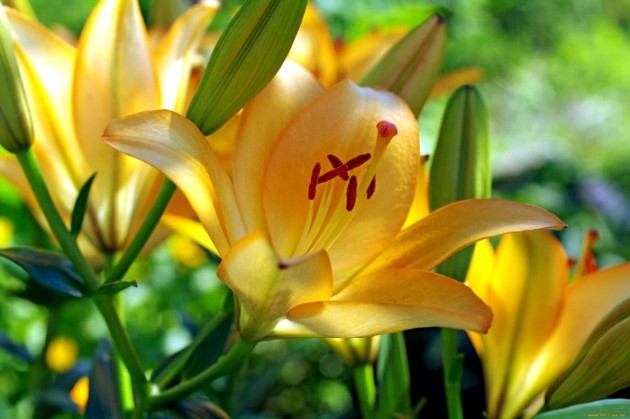
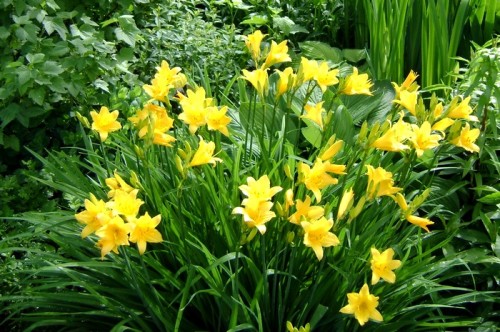
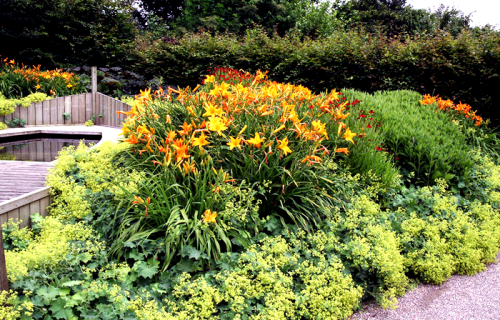
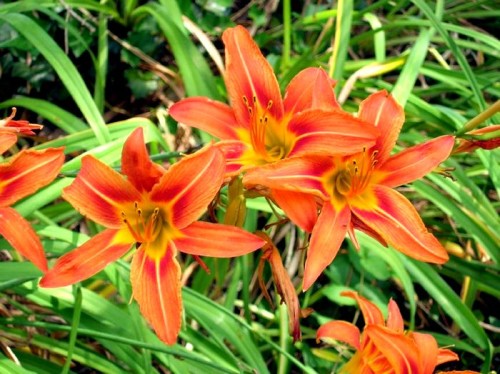
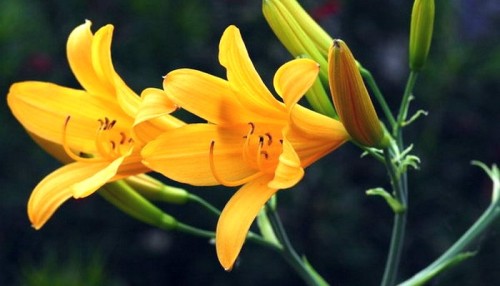
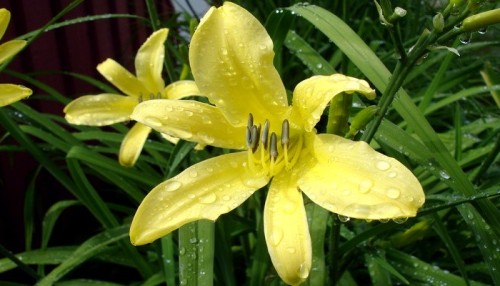
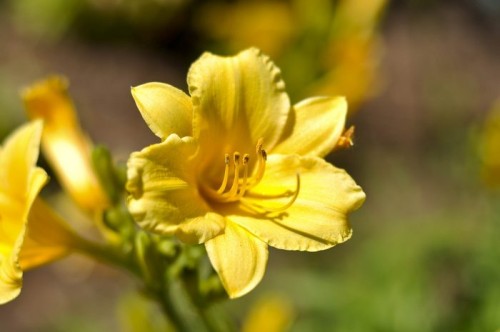

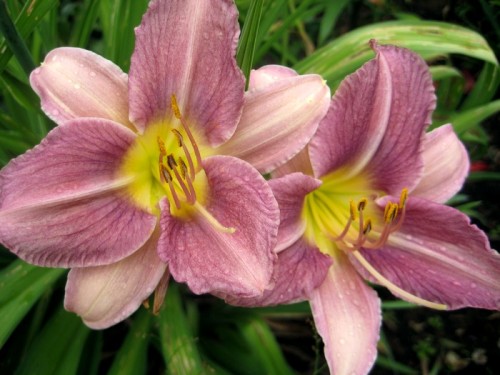
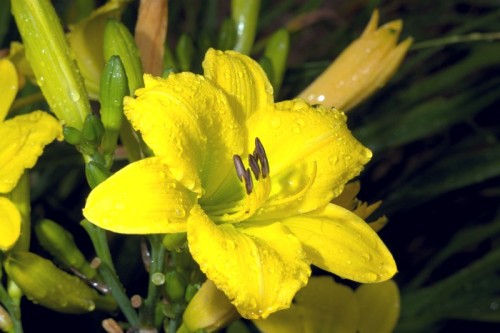
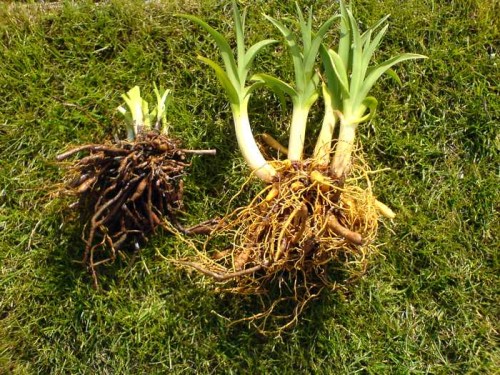
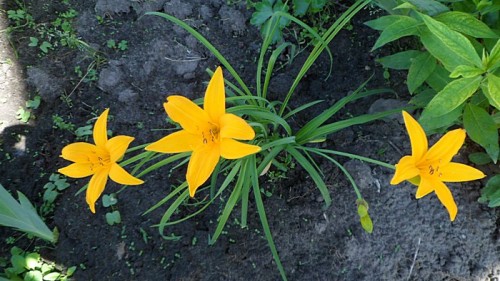
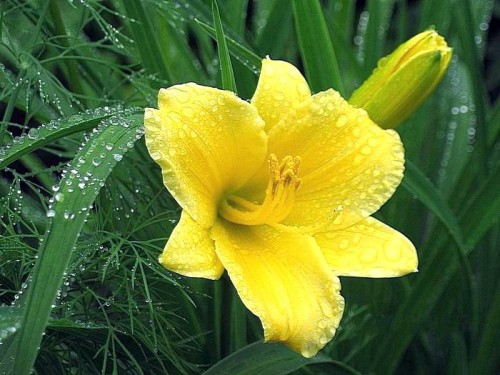
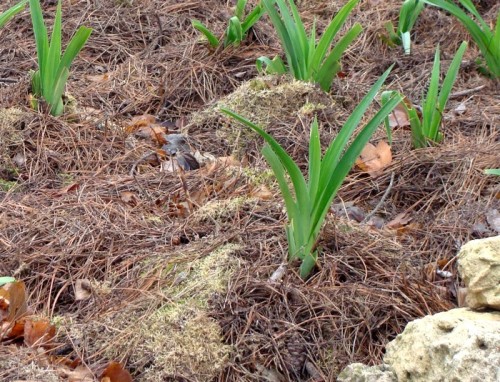
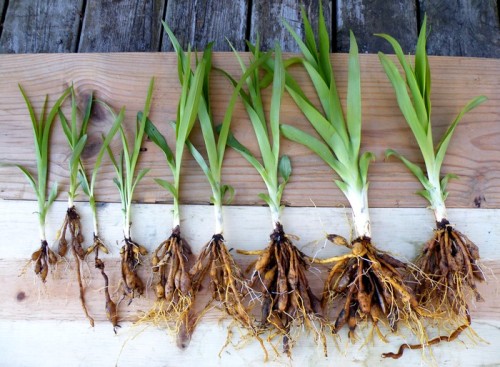
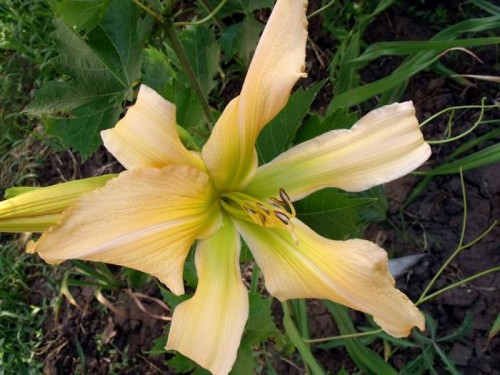
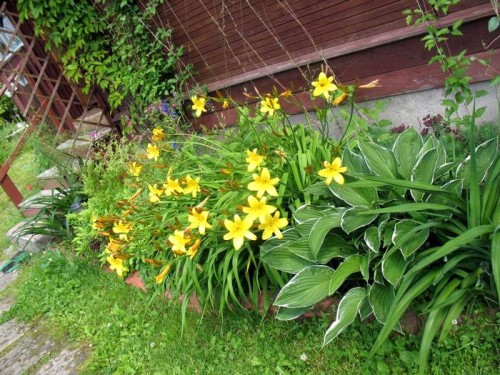












 Start a discussion ...
Start a discussion ...